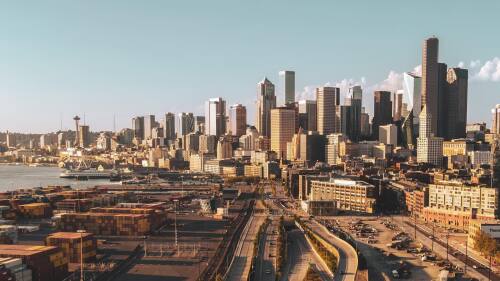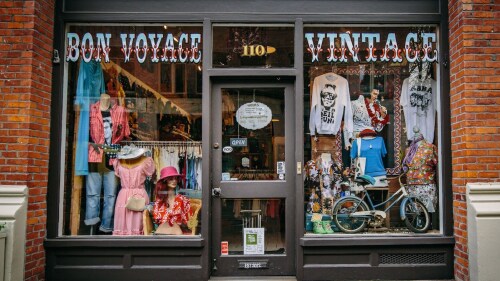King County’s new RapidRide G Line route — a bus service running every six minutes Monday-Saturday through Seattle’s downtown, First Hill, Capitol Hill, and Madison Valley neighborhoods — just launched over the weekend.
Part of the Madison Street Area Project, the G Line implements new RapidRide stops + dedicated transit lanes in an effort to improve bus reliability and travel times.
Here’s the news on the street:
The numbers
SDOT added 1.4 miles of red bus lanes dedicated for the G Line, fixed sidewalks, installed new walk and bike signals, rebuilt utilities, and redesigned street aspects to regulate traffic. Here are some more of the G Line’s project numbers:
- $144.3 million — the project cost to complete
- 3.8 miles of sidewalk built or replaced
- 9.1 lane-miles of completed concrete roadway
- 2.3 lane-miles of new asphalt overlay
- 21 new RapidRide stops — 10 paired stops in each direction + one on First Avenue
- Four new center-running stations between Seventh and Thirteenth avenues
- Five new traffic signals and 36 upgraded existing signals
- 108 new trees planted throughout the project area, with some final planting to be completed this fall
The “limo” bus
Dubbed the “limo” bus by Mayor Bruce Harrell at a ribbon cutting in August, the G Line fleet has some added bells and whistles to improve transit access and experience.
The New Flyer XDE60 models run $1.3 million each, equipped with a new wheelchair system + on-board space for bicycles (similar to the light rail, instead of racking them at the front like other buses).
The new buses also have left-side doors for passenger boarding at new center median island stops, with ORCA card readers at every point of entry. The centrally located stops let buses pick up and drop off riders without getting blocked by drivers turning right.
The new-and-improved route connects to the First Hill Streetcar, the Seattle Ferry Terminal at Colman Dock, and light rail at Symphony Station.












